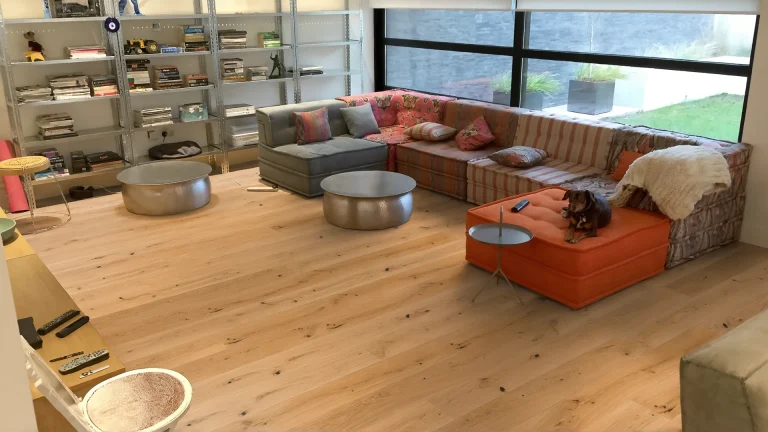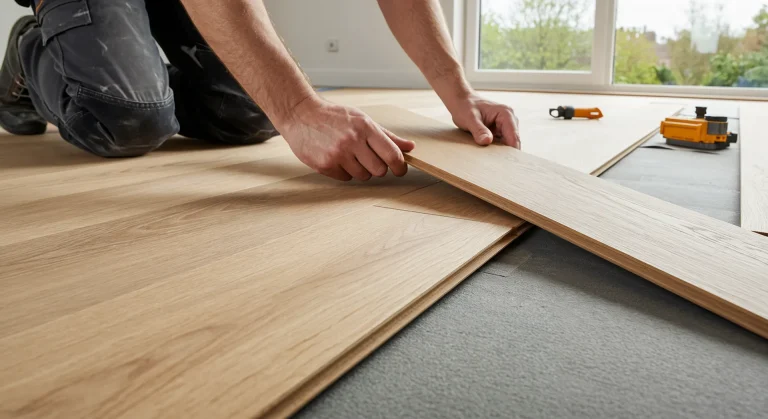The kitchen is undeniably the heart of most UK homes – a bustling hub of activity, from culinary creations and family meals to social gatherings and daily chores. This means your kitchen flooring has one of the toughest jobs in the house. It needs to be stylish enough to complement your design vision, yet practical enough to withstand spills, dropped utensils, heavy foot traffic, and frequent cleaning. Choosing the right kitchen flooring is a significant decision that impacts not only the look and feel of your space but also its long-term functionality and maintenance demands.
With a vast array of materials, styles, and price points available on the UK market in 2025, making the best choice can feel overwhelming. This ultimate guide will walk you through the essential considerations, compare the top kitchen flooring options – from Luxury Vinyl Tile (LVT) and porcelain tiles to engineered wood and laminate – and explore current trends to help you select a floor that’s perfect for your lifestyle, budget, and aesthetic.
Jump to Section:
- Why Your Kitchen Floor Choice is So Crucial
- Must-Have Qualities: What to Look for in Kitchen Flooring
- Top Kitchen Flooring Options for UK Homes in 2025
- Luxury Vinyl Tile (LVT/LVP): The All-Round Kitchen Champion?
- Porcelain & Ceramic Tiles: Classic Durability for Kitchens
- Engineered Wood Flooring: Bringing Natural Warmth to Kitchens (Carefully!)
- Laminate Flooring: Budget-Friendly Kitchen Looks (With Caveats)
- Natural Stone Flooring: Premium Beauty and Resilience
- Sheet Vinyl Flooring: Practicality and Comfort on a Roll
- Styling Your Kitchen Floor: UK Trends & Timeless Ideas (2025)
- Installation & Cost Factors for UK Kitchen Flooring
- Keeping it Spotless: Essential Kitchen Floor Maintenance
- The Perfect Recipe: Choosing Your Ideal Kitchen Flooring
Why Your Kitchen Floor Choice is So Crucial
More than any other room, the kitchen demands a floor that performs. Think about it:
- Spills & Splashes: From water and cooking oil to dropped sauces and wine, your kitchen flooring will inevitably face liquid assaults.
- High Traffic: It’s often the busiest room, experiencing constant footfall.
- Dropped Items: Pans, cutlery, and crockery can all take a tumble, testing the floor’s impact resistance.
- Cleaning Demands: Hygiene is paramount, so the floor must be easy to clean thoroughly and regularly.
- Style Impact: As many UK kitchens are now part of open-plan living spaces, the flooring choice significantly influences the overall design aesthetic.
Choosing unwisely can lead to premature wear, water damage, difficult upkeep, or a floor that simply doesn’t cope with the rigours of daily kitchen life.
Must-Have Qualities: What to Look for in Kitchen Flooring
When selecting kitchen flooring, prioritise these essential characteristics:
- Water Resistance/Waterproof: This is paramount. Choose materials that won’t warp, swell, stain, or allow moisture to seep into the subfloor.
- Durability & Wear Resistance: It needs to withstand scratches from chair legs, pet claws, dropped items, and general wear and tear.
- Ease of Cleaning & Maintenance: A smooth, non-porous surface that can be wiped clean easily is ideal for hygiene.
- Comfort Underfoot: You spend a lot of time standing in the kitchen, so a degree of comfort can make a big difference.
- Style & Aesthetics: It should complement your kitchen units, worktops, and overall home décor.
- Slip Resistance: Especially important in an area prone to wet spills. Look for textured surfaces or specific slip ratings (R-ratings).
- Underfloor Heating (UFH) Compatibility: Increasingly standard in UK kitchen renovations for added comfort. Ensure your chosen flooring is suitable.
- Budget: Consider both the material cost and installation expenses.
Top Kitchen Flooring Options for UK Homes in 2025
Let’s explore the most suitable materials for your kitchen flooring needs:
Luxury Vinyl Tile (LVT/LVP): The All-Round Kitchen Champion?
LVT has soared in popularity for UK kitchens, and for good reason. It’s typically composed of multiple layers, including a tough protective wear layer, a realistic design layer (wood or stone effect), and a waterproof core (often SPC – Stone Plastic Composite, or WPC – Wood Plastic Composite).
Pros:
- 100% Waterproof: Most LVT (especially SPC/WPC rigid core) is impervious to water, making it perfect for kitchens.
- Highly Durable: Excellent resistance to scratches, dents, stains, and wear. Look for a wear layer of 0.55mm for busy kitchens.
- Realistic Designs: Superb mimicry of wood (including popular herringbone LVT patterns) and stone. Brands like Pro-Tek Flooring, Karndean, Amtico, and Quick-Step offer stunning options.
- Comfortable & Quiet: Generally warmer and softer underfoot than ceramic tiles. WPC cores or LVT with built-in underlay offer good acoustic properties.
- Easy to Clean: Smooth surface, simple to wipe down.
- UFH Compatible: Works very well with underfloor heating.
- DIY-Friendly Options: Click-lock LVT is suitable for competent DIYers.
Cons:
- Subfloor needs to be very smooth and level for best results, especially for thinner or glue-down types.
- Quality (and therefore price and performance) varies significantly between brands.
- Cannot be refinished like wood.
Porcelain & Ceramic Tiles: Classic Durability for Kitchens
A traditional and enduring choice for kitchen flooring.
Pros:
- Extremely Durable: Highly resistant to scratches, dents, and heavy wear. Porcelain is denser and even tougher than ceramic.
- Waterproof: Glazed tiles are completely impervious to water.
- Hygienic & Easy to Clean: Non-porous surface is ideal for kitchens.
- Vast Design Choice: Huge range of colours, patterns (including encaustic-look, geometric, large format – all on-trend in the UK for 2025), sizes, and finishes.
- Excellent with UFH: Conducts and retains heat well.
Cons:
- Hard & Cold Underfoot: Can be uncomfortable to stand on for long periods unless UFH is installed.
- Grout Maintenance: Grout lines can stain and require periodic cleaning/sealing (though modern grouts are improving).
- Can Chip/Crack: Dropping heavy items can chip or crack tiles, and replacement can be tricky.
- Installation: Usually requires professional fitting, adding to cost.
Engineered Wood Flooring: Bringing Natural Warmth to Kitchens (Carefully!)
For those who love the authentic look and feel of real wood, engineered wood can be a considered option for kitchens, but with important caveats.
Pros:
- Real Wood Beauty: Offers the genuine warmth and character of wood. Oak is a UK favourite.
- More Stable than Solid Wood: Its layered construction makes it less prone to warping/gapping with humidity changes.
- UFH Compatible: Most engineered wood is suitable for underfloor heating.
- Can be Refinished: Depending on the wear layer thickness (aim for 4mm+), it can be sanded and refinished once or twice.
Cons:
- Not Waterproof: Susceptible to water damage from major leaks or prolonged spills, even with a good finish. Appliance leaks can be disastrous.
- Requires Vigilant Care: Spills must be wiped up immediately. The finish (e.g., robust lacquer or well-maintained hardwax oil) is crucial for protection.
- Can Dent/Scratch: Real wood is softer than LVT or tile wear layers.
- Generally more expensive than LVT or laminate.
Laminate Flooring: Budget-Friendly Kitchen Looks (With Caveats)
Laminate offers an affordable way to get wood or tile effects.
Pros:
- Cost-Effective: Usually the cheapest option for a wood or tile look.
- Decent Scratch Resistance: The melamine wear layer is quite tough (check AC rating – AC4 suitable for kitchens).
- DIY-Friendly: Click-lock systems are easy to install.
Cons:
- Highly Susceptible to Water Damage: The HDF core will swell and warp if water penetrates seams or edges. Even “water-resistant” laminates have significant limitations and are not truly waterproof. Generally not recommended for kitchens unless extreme care is taken and spills are minimal.
- Cannot be Refinished: Like LVT, damage is usually permanent.
- Can Sound Hollow: Requires good quality underlay to reduce noise.
- Looks less premium than LVT or engineered wood.
Natural Stone Flooring: Premium Beauty and Resilience
Offers unique, timeless appeal (e.g., Slate, Limestone, Travertine).
Pros:
- Unique Natural Beauty: Each tile is different. Adds significant character and value.
- Very Durable: Extremely hard-wearing if properly sealed and maintained.
- Good with UFH: Excellent heat conductor.
Cons:
- Expensive: High material and specialist installation costs.
- Porous (Often): Most types require regular sealing to prevent staining.
- Cold & Hard Underfoot: Similar to ceramic/porcelain; UFH highly recommended.
- Can Scratch/Chip/Stain: Depending on the stone type (e.g., softer limestone vs. harder granite/slate).
Sheet Vinyl Flooring: Practicality and Comfort on a Roll
A long-standing budget-friendly choice for kitchen flooring.
Pros:
- Waterproof Surface: The sheet itself is impervious to water.
- Affordable: One of the cheapest flooring options.
- Comfortable & Quiet: Often cushioned, providing a softer feel underfoot.
- Seamless: Available in wide rolls, often allowing for a seamless installation in smaller UK kitchens, reducing areas for water ingress.
- Wide Range of Designs: Many patterns and colours available.
Cons:
- Can Dent & Tear: Less robust than LVT or tiles; sharp objects or heavy appliances can cause damage.
- Subfloor Imperfections Can Show: Needs a smooth subfloor.
- Looks Less Premium: Generally doesn’t achieve the same high-end aesthetic as LVT or natural materials.
Styling Your Kitchen Floor: UK Trends & Timeless Ideas (2025)
Your kitchen flooring is a major design element. Current UK trends for 2025 include:
- Natural & Earthy Tones: Light oaks, warm beiges, soft greys, and nature-inspired greens in LVT and tiles create a calming, organic feel.
- Large Format Tiles: Porcelain or stone-effect LVT tiles in larger sizes (e.g., 600x600mm, 900x600mm) minimise grout lines and create a spacious, contemporary look, particularly popular in open-plan kitchen-diners.
- Herringbone & Chevron Patterns: This classic parquet look is hugely popular in LVT and engineered wood, adding texture and sophistication. Works well in both modern and traditional kitchen designs.
- Textured Finishes: From distressed wood-look LVT to rustic tumbled-edge stone or porcelain, texture adds depth and character. It can also improve slip resistance.
- Seamless Flow: In open-plan UK homes, using the same flooring (or complementary styles) throughout the kitchen, dining, and living areas creates a cohesive and expansive feel. LVT is excellent for this due to its versatility.
- Matching Finishes: Consider how your floor will coordinate with kitchen cabinets (e.g., matt finish units with a matt floor, or a contrast like gloss units with a textured floor), worktops, and splashbacks.
Installation & Cost Factors for UK Kitchen Flooring
- Subfloor Preparation: This is critical for all kitchen flooring types. It must be clean, dry, and perfectly level. Costs for screeding/levelling can add £15+/m².
- DIY vs. Professional: Click-lock LVT and laminate are DIY-feasible. Tiles, solid wood, and glue-down engineered/LVT usually benefit from professional fitting, which adds to the cost.
- Material & Installation Costs (UK 2025 Estimates – per m²):
– LVT: Materials £20-£60+; Installation ~£15-£30+.
– Porcelain/Ceramic Tiles: Materials £20-£60+ (can be much more for designer/natural stone lookalikes); Installation ~£30-£50+.
– Engineered Wood: Materials £40-£80+; Installation ~£25-£45+.
– Laminate: Materials £10-£30+; Installation ~£15-£25+.
– Sheet Vinyl: Materials £10-£30+; Installation ~£10-£20+.
– Always factor in underlay (if needed), DPM, adhesives, grout, trims, and potential old floor removal/disposal.
Keeping it Spotless: Essential Kitchen Floor Maintenance
- Sweep or Vacuum Regularly: Use a soft brush attachment to remove grit and crumbs.
- Wipe Spills Immediately: This prevents staining and potential water damage, especially for wood and laminate.
- Appropriate Cleaners:
– LVT & Sheet Vinyl: Damp mop with a pH-neutral cleaner.
– Tiles: pH-neutral cleaner; grout may need specific attention.
– Engineered Wood: Depends on finish – pH-neutral for lacquer; specialist soap for oiled/hardwax oil finishes.
– Laminate: Damp mop only (well-wrung), laminate-specific cleaner. - Avoid Steam Mops: Generally not recommended for laminate, wood, or even some LVT as excessive steam can damage cores or adhesives over time.
- Furniture Pads: Protect against scratches from chairs and tables.
The Perfect Recipe: Choosing Your Ideal Kitchen Flooring
Selecting the best kitchen flooring for your UK home in 2025 involves carefully balancing your priorities. For most, the winning combination often includes excellent water resistance, high durability, ease of cleaning, and a style that complements their kitchen design. For these reasons, Luxury Vinyl Tile (LVT/LVP) and Porcelain/Ceramic Tiles consistently emerge as top recommendations, offering robust performance in demanding kitchen environments, including busy family homes or even coastal properties where resilience is key. Engineered wood can bring natural beauty but requires more mindful care.
Ultimately, weigh the pros and cons of each material against your household’s needs, your aesthetic preferences, and your budget. With careful consideration and the right choice, your new kitchen flooring will provide a beautiful, practical, and lasting foundation for the heart of your home.

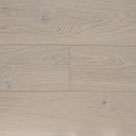 Light
Light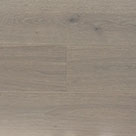 Grey
Grey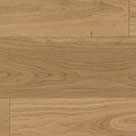 Natural
Natural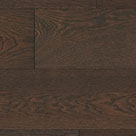 Dark
Dark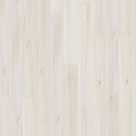 White
White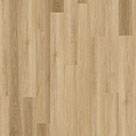 Light
Light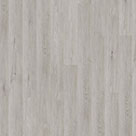 Grey
Grey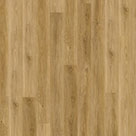 Natural
Natural Dark
Dark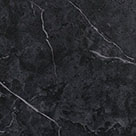 Black
Black




